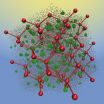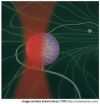(Press-News.org) New research shows that more than 75 per cent of people with a particular version of a gene don't produce under-arm odour but use deodorant anyway.
The study was based on a sample of 6,495 women who are part of the wider Children of the 90s study at the University of Bristol. The researchers found that about two per cent (117 out of 6,495) of mothers carry a rare version of a particular gene (ABCC11), which means they don't produce any under-arm odour.
While about 5 per cent of people who produce an odour do not use deodorant, more than a fifth (26 out of 117) of those who don't produce an odour do not use deodorant, a statistically highly significant difference. However, 78 per cent of people who do not produce odour, still use deodorant on all or most days.
Speaking about the novel finding, published today in the Journal of Investigative Dermatology, the lead author Professor Ian Day said:
'An important finding of this study relates to those individuals who, according to their genotype, do not produce under-arm odour. One quarter of these individuals must consciously or subconsciously recognise that they do not produce odour and do not use deodorant, whereas most odour producers do use deodorant. However, three quarters of those who do not produce an odour regularly use deodorants; we believe that these people simply follow socio-cultural norms. This contrasts with the situation in North East Asia, where most people do not need to use deodorant and they don't.'
The first author of the paper, Dr Santiago Rodriguez added:
'These findings have some potential for using genetics in the choice of personal hygiene products. A simple gene test might strengthen self-awareness and save some unnecessary purchases and chemical exposures for non-odour producers.'
The authors highlight that people who carry this rare genetic variant are also more likely to have dry (rather than sticky) ear wax and that checking ear wax is a good indicator of whether or not a person produces under-arm odour.
Previous studies have shown that there is a link between a genetic variant located in the ABCC11 gene and under-arm odour. Sweat glands produce sweat which, combined with bacteria, result in under-arm odour. The production of odour depends on the existence of an active ABCC11 gene. However, the ABCC11 gene is known to be inactive in some people.
This study looked for the first time at deodorant usage in relation to ABCC11 genotype and also in comparison with other factors such as age, background and general household hygiene. At the individual level, the influence of ABCC11 genotype was much stronger than the other factors. The statistical support for the ABCC11 finding was extremely strong – the random chance of getting the same answer was less than one in a million million million odds.
###
Notes to editors
1. The paper: 'Dependence of deodorant usage on ABCC11 genotype: scope for personalised genetics in personal hygiene' by Santiago Rodriguez et al is published today [17 January 2013] in the Journal of Investigative Dermatology, (Nature Publishing), doi:10.1038/jid.2012.480
2. According to Euromonitor, the retail sales value of the deodorant industry was £604m in 2011, representing a potential saving of over £12m to the 2 per cent of UK adults who don't produce under-arm odour if they dispensed with deodorants.
3. Professor Ian Day is available for interview. For all interview requests, contact Dara O'Hare, communications manager at Children of the 90s, on +44 (0)117 331 0077, 07891 549144 or email media@childrenofthe90s.ac.uk.
Deodorants: Do we really need them?
2013-01-17
ELSE PRESS RELEASES FROM THIS DATE:
Gastric banding an effective long-term solution to obesity
2013-01-17
Laparoscopic adjustable gastric banding – lap banding – is a safe and effective long-term strategy for managing obesity, according to the findings of a landmark 15-year follow-up study of patients treated in Australia.
The follow-up study, the longest and most comprehensive yet reported, was published in the Annals of Surgery, and found a significant number of lap band patients maintained an average weight loss of 26 kilograms for more than a decade after their procedure.
Professor Paul O'Brien and colleagues from the Centre for Obesity Research and Education (CORE) ...
'Jet-lagged' fruit flies provide clues for body clock synchronisation
2013-01-17
New research led by a team at Queen Mary, University of London, has found evidence of how daily changes in temperature affect the fruit fly's internal clock.
"A wide range of organisms, including insects and humans, have evolved an internal clock to regulate daily patterns of behaviour, such as sleep, appetite, and attention," explains Professor Ralf Stanewsky, senior study author from Queen Mary's School of Biological and Chemical Sciences.
"Research on animal and human clocks shows that they are fine tuned by natural and man-made time cues, for example the daily ...
Genetic admixture in southern Africa
2013-01-17
This press release is available in German.
An international team of researchers from the MPI for Evolutionary Anthropology in Leipzig and the CNRS in Lyon have investigated the maternally inherited mitochondrial DNA of 500 individuals from southern Africa speaking different Khoisan and Bantu languages. Their results demonstrate that Khoisan foragers were genetically more diverse than previously known. Divergent mtDNA lineages from indigenous Khoisan groups were incorporated into the genepool of the immigrating Bantu-speaking agriculturalists through admixture, and have ...
Study of cancer cell metabolism yields new insights on leukemia
2013-01-17
University of Rochester Medical Center scientists have proposed a new reason why acute myeloid leukemia, one of the most aggressive cancers, is so difficult to cure: a subset of cells that drive the disease appear to have a much slower metabolism than most other tumors cells.
The slower metabolism protects leukemia cells in many important ways and allows them to survive better – but the team also found an experimental drug tailored to this unique metabolic status and has begun testing its ability to attack the disease, URMC researchers report in the Jan. 17, 2013, online ...
Bacteria's hidden skill could pave way for stem cell treatments
2013-01-17
A discovery about the way in which bugs spread throughout the body could help to develop stem cell treatments.
Researchers at the University of Edinburgh have found that bacteria are able to change the make-up of supporting cells within the nerve system, called Schwann cells, so that they take on the properties of stem cells.
Because stem cells can develop into any of the different cell types in the body – including liver and brain cells – mimicking this process could aid research into a range of degenerative conditions.
Scientists made the discovery studying ...
RUB researchers find over active enzyme in failing hearts
2013-01-17
A certain enzyme, the CaM kinase II, keeps the cardiac muscle flexible. By transferring phosphate groups to the giant protein titin, it relaxes the muscle cells. This is reported by researchers led by Prof. Dr. Wolfgang Linke of the Institute of Physiology at the Ruhr Universität in the journal Circulation Research. In failing hearts, which don't pump enough blood around the body, the scientists found an overly active CaM kinase II. "The phosphorylation of titin could be a new starting point for the treatment of heart failure" Prof. Linke speculates.
Titin phosphorylation ...
Soft Lego built in the computer
2013-01-17
In developing these novel self-assembling materials, postdoc Barbara Capone has focused on the design of organic and inorganic building blocks, which are robust and can be produced at large scale. Capone has put forward, together with her colleagues at the Universities of Vienna and Mainz, a completely new pathway for the construction of building blocks at the nanoscale.
"Soft Lego" orders in crystal structures
The team of researchers has shown that so-called block copolymer stars – that means polymers that consist of two different blocks and they are chemically ...
Vaginal delivery is the safest option for women with pelvic girdle pain
2013-01-17
Caesarean section increases the risk of persistent pelvic girdle pain after delivery compared with vaginal delivery, according to a new study from the Norwegian Institute of Public Health.
Caesarean section rates are increasing worldwide, and this trend has partly been explained by women's requests for planned caesarean section without a medical reason. Pregnancy-related pelvic girdle pain has been associated with increased preference for caesarean section and with increased planned caesarean section rates.
"Some women with severe pelvic girdle pain might fear that ...
A nano-gear in a nano-motor inside you
2013-01-17
To live is to move. You strike to swat that irritable mosquito, which skilfully evades the hand of death. How did that happen? Who moved your hand, and what saved the mosquito? Enter the Molecular Motors, nanoscale protein-machines in the muscles of your hand and wings of the mosquito. You need these motors to swat mosquitoes, blink your eyes, walk, eat, drink... just name it. Millions of motors tug as a team within your muscles, and you swat the mosquito. This is teamwork at its exquisite best.
Paradoxically, a weak and inefficient motor (called dynein) is the one that ...
A hidden treasure in the Large Magellanic Cloud
2013-01-17
Nearly 200 000 light-years from Earth, the Large Magellanic Cloud, a satellite galaxy of the Milky Way, floats in space, in a long and slow dance around our galaxy. Vast clouds of gas within it slowly collapse to form new stars. In turn, these light up the gas clouds in a riot of colours, visible in this image from the NASA/ESA Hubble Space Telescope.
The Large Magellanic Cloud (LMC) is ablaze with star-forming regions. From the Tarantula Nebula, the brightest stellar nursery in our cosmic neighbourhood, to LHA 120-N 11, part of which is featured in this Hubble image, ...



